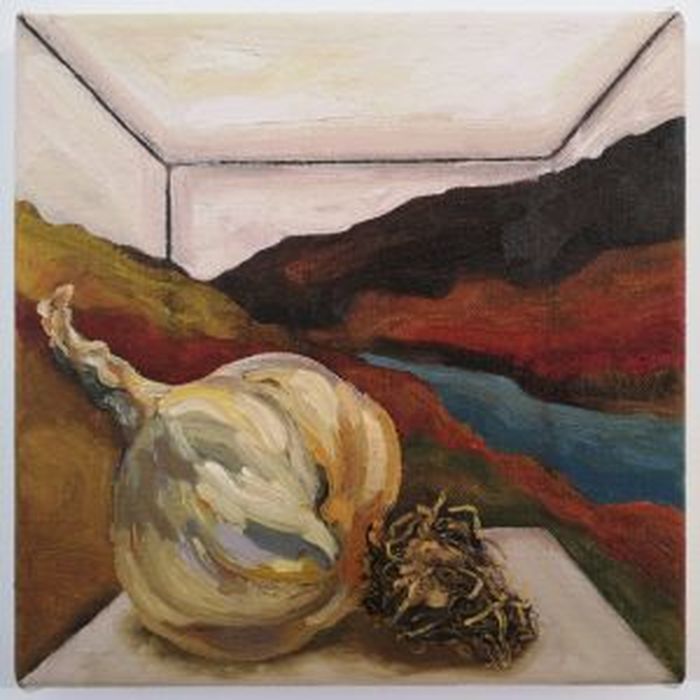Lone portraits on the wall: Leah Mclaine in conversation with Connor Phillips
Vulture’s Creative Director Leah Mclaine captures painter Connor Phillips in a perfect moment of oil paintings, candles, pearls, and black and white photography
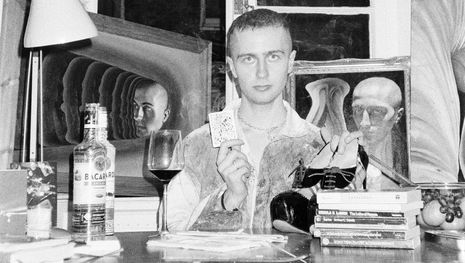
We are awkwardly hauling eight foot canvases down a circling staircase in Trinity Hall. Connor has a spiky leather bag on his back, Burberry heels in hand, and is donning a blue velvet suit, a pearl headdress and a pair of socks with holes in the heels. His body is obstructed by the canvases between us, but I can hear a boisterous giggling as we make the short trip to my room across Great Court in the dark. I try to avoid tripping on the cobblestone as I lug the canvasses across the court in platform crocs. Valiantly, but not surprisingly, Connor follows relatively effortlessly behind me, bare-footed. What ensues is a rapid hour of furniture arrangement, incense burning, flash photography, wine, books, boots, balancing, lying on desks, and arranging desk lamps. Connor stares at me, his self-portraits towering above him, cowering below him, and extending alongside him; it is the first time I have seen someone be so wholly vulnerable before me. When the night comes to a close, we leave the room in disarray: canvases, cameras, and matches litter the space.
"Connor’s art begins in the thick and thin of things—between gay hook-up culture, dissociative isolation and oil paints"
A week later, Connor sits across from me in an armchair, the chaos of creation behind us and the task at hand ahead: acquainting him with you.
We begin in media res. Connor’s art begins in the thick and thin of things—between gay hook-up culture, dissociative isolation and oil paints.
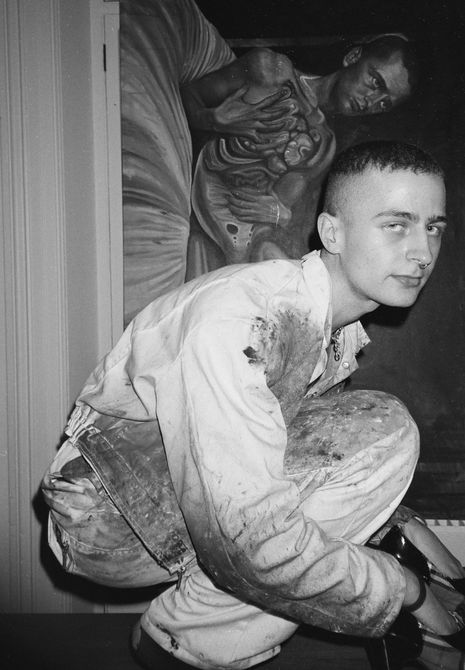
Secondary school was rough. I was closeted yet secretly engaging in gay hook-up culture, and more generally dealing with the duality of that lifestyle. Moving schools was basically moving away from my queerness. It took a long time to speak my mind again after that; moving into sixth form was a long period of social isolation. Year twelve was when I started using oil paints, I found Francis Bacon and his paintings felt like home to me. He had quite the traumatic queer experience. Learning of him was this immersive experience of making tangible what was on my mind.
For most artists, there occurs a kind of transformation of the self through the meditation of painting—one thinks of Picasso, for instance. However, you manage to curate such a coherent and consistent image of yourself in your work. How do you achieve this?
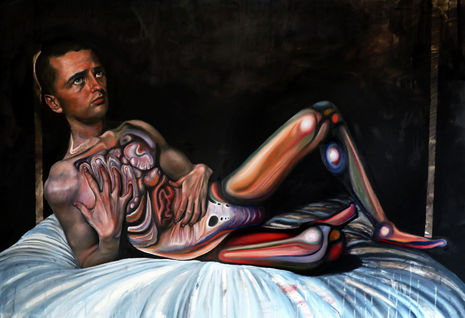
There are no photos of my face between the ages of 16 and 18 because there was such a separation between what I thought I looked like, how I looked in photos themselves, how I appeared in the mirror, and what others told me of my visage. I couldn’t reconcile the different versions. But painting was pure objectivity of physical form. It allowed me to look at what I look like and I found security in that—I found security in representing another self.
"Painting was pure objectivity of physical form. It allowed me to look at what I look like and I found security in that"
The gallery opening was last night and I went with two friends. The gallery owner said to them, ‘you have to let Connor know that I love his work’. I was standing right there in front of this huge portrait of myself and I thought it was amazing that she didn’t recognise me from it.
There seems to be a romanticism that you enjoy with yourself in your art, and yet you never seem to paint flesh in an erotic way…would you say that is related to your thoughts about hook-up culture?
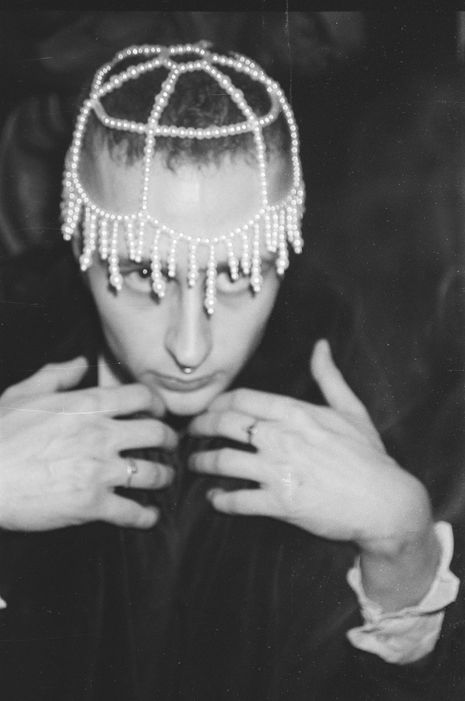
It’s not to do with intimacy with others…my consciousness very much resides in my mind. The intimacy I’ve shared with others has never accessed that part of my mind.
In a way, queerness means our sexualities are a photographic narrative and we are moving to a photographic positive—the colour version. Have you ever painted a lover?
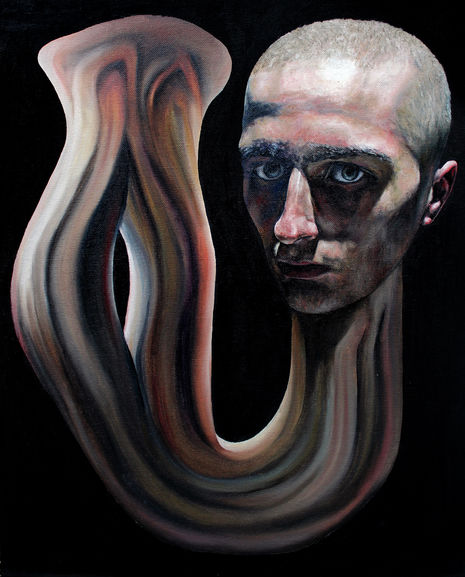
I’ve painted the body parts of a lover. Portraiture, to me, is very sacred. I cry during paintings. I laugh during paintings. It’s very taxing. I put the brush down and I’m like, wow. There has never been anyone in the world I have had a deep enough connection with where I felt I could even begin to represent them. If I ever did have a serious relationship, then they would be obsessively painted because they would become a home for my consciousness outside my body. That would be really important to me.
I believe you’ve only recently taken the step to galleries, zines and Varsity this term…is it strange making your work consumable?
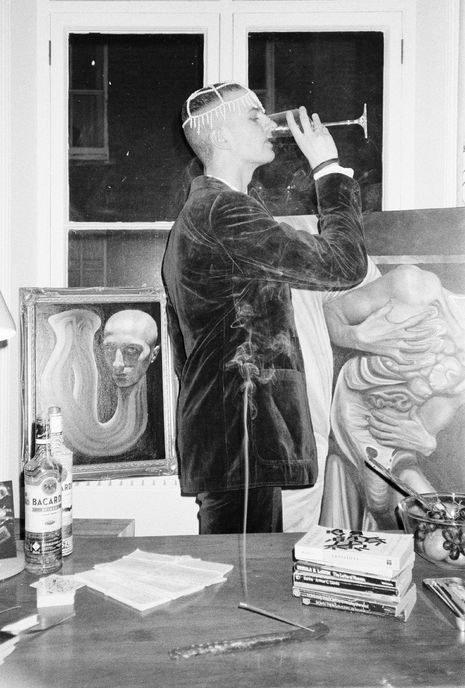
It’s weird—I walk past the gallery and I can see people looking and talking about my work. It makes me very nervous. It’s quite exposing, like I am just curled up naked on the wall and someone is looking and talking about it with their...um...partner.
And this is where I shall leave Connor with you—watching partners in galleries looking at his lone portraits on the wall. Connor is at a focal moment of transition in his work, developing from painting self-portraits to embarking on painting those he has met in Cambridge. He says with a fond smile, “I am knowing people as me and having relationships as myself…they're blossoming and I want to document that”.
You can view Connor’s work in the upcoming publication of Sentire Zine, at Gallery V this month until April, and at the John Hughes Arts Festival at Jesus College from February 19th-21st.
 Features / How sweet is the en-suite deal?13 January 2026
Features / How sweet is the en-suite deal?13 January 2026 Comment / Will the town and gown divide ever truly be resolved?12 January 2026
Comment / Will the town and gown divide ever truly be resolved?12 January 2026 News / 20 vet organisations sign letter backing Cam vet course13 January 2026
News / 20 vet organisations sign letter backing Cam vet course13 January 2026 Arts / Fact-checking R.F. Kuang’s Katabasis13 January 2026
Arts / Fact-checking R.F. Kuang’s Katabasis13 January 2026 Music / Inside Radiohead’s circle13 January 2026
Music / Inside Radiohead’s circle13 January 2026

